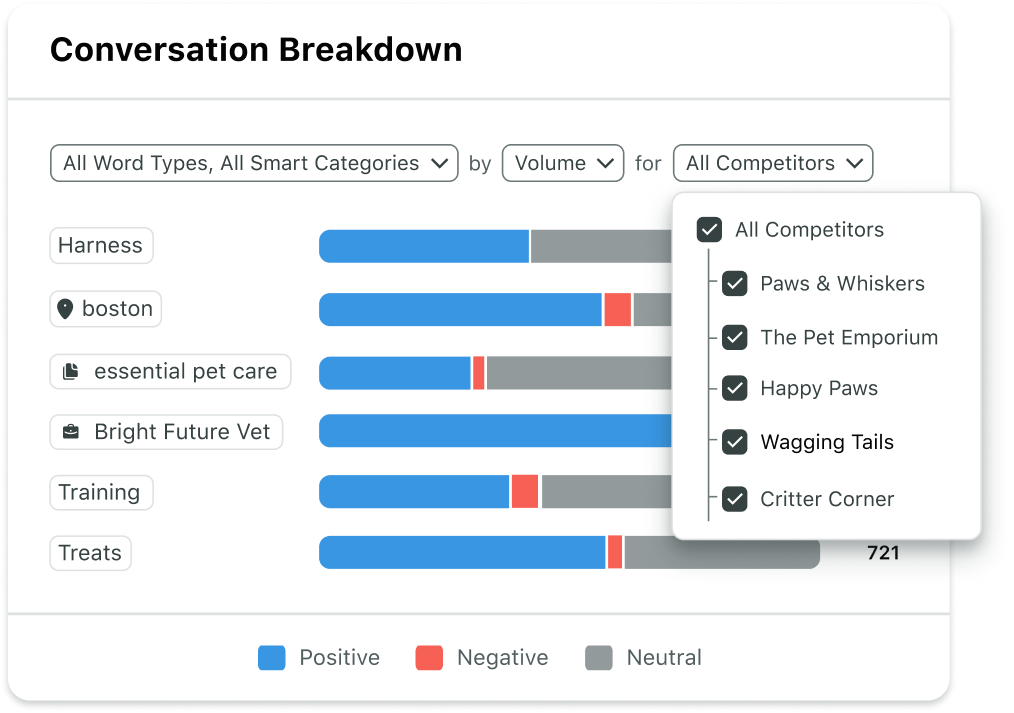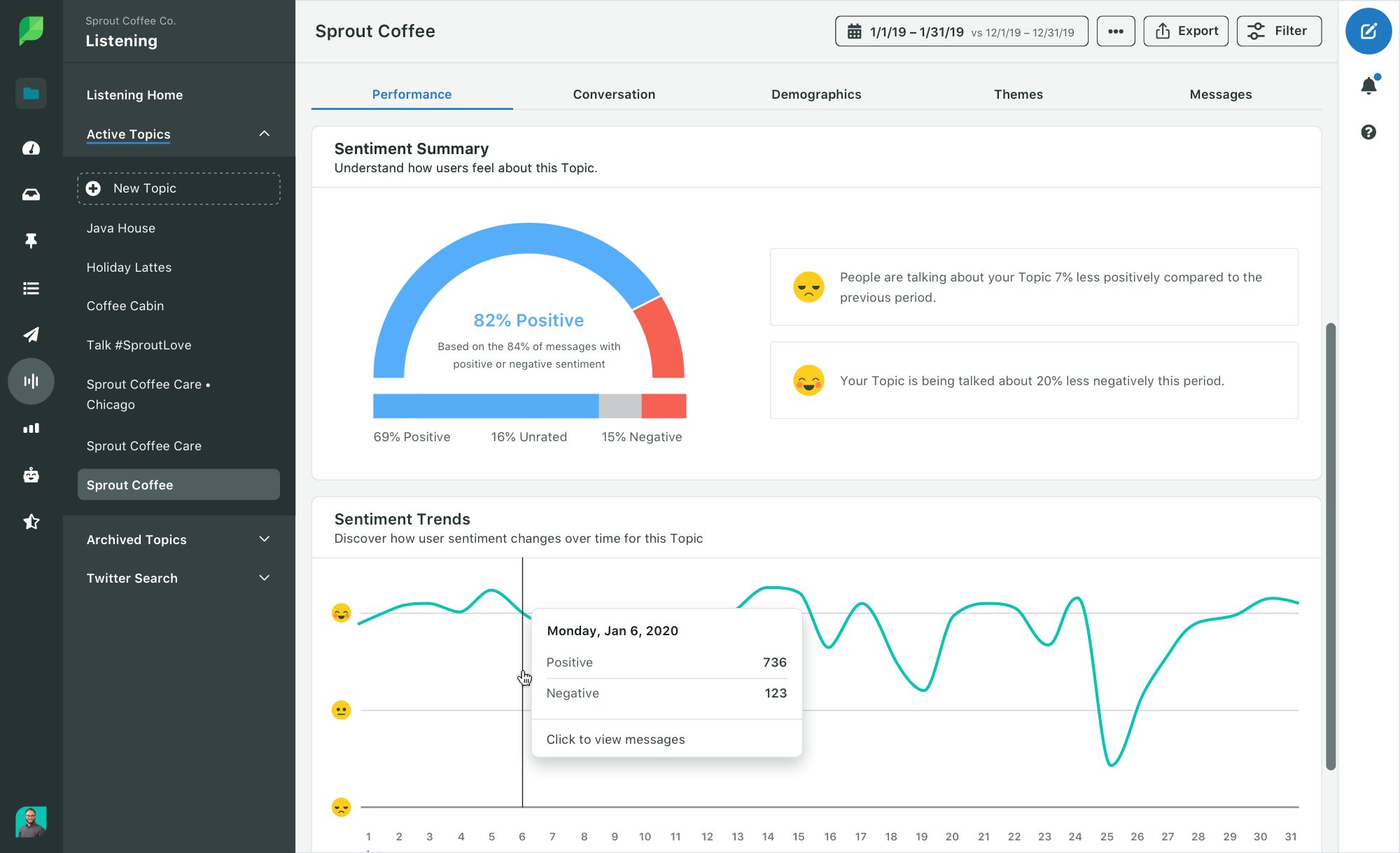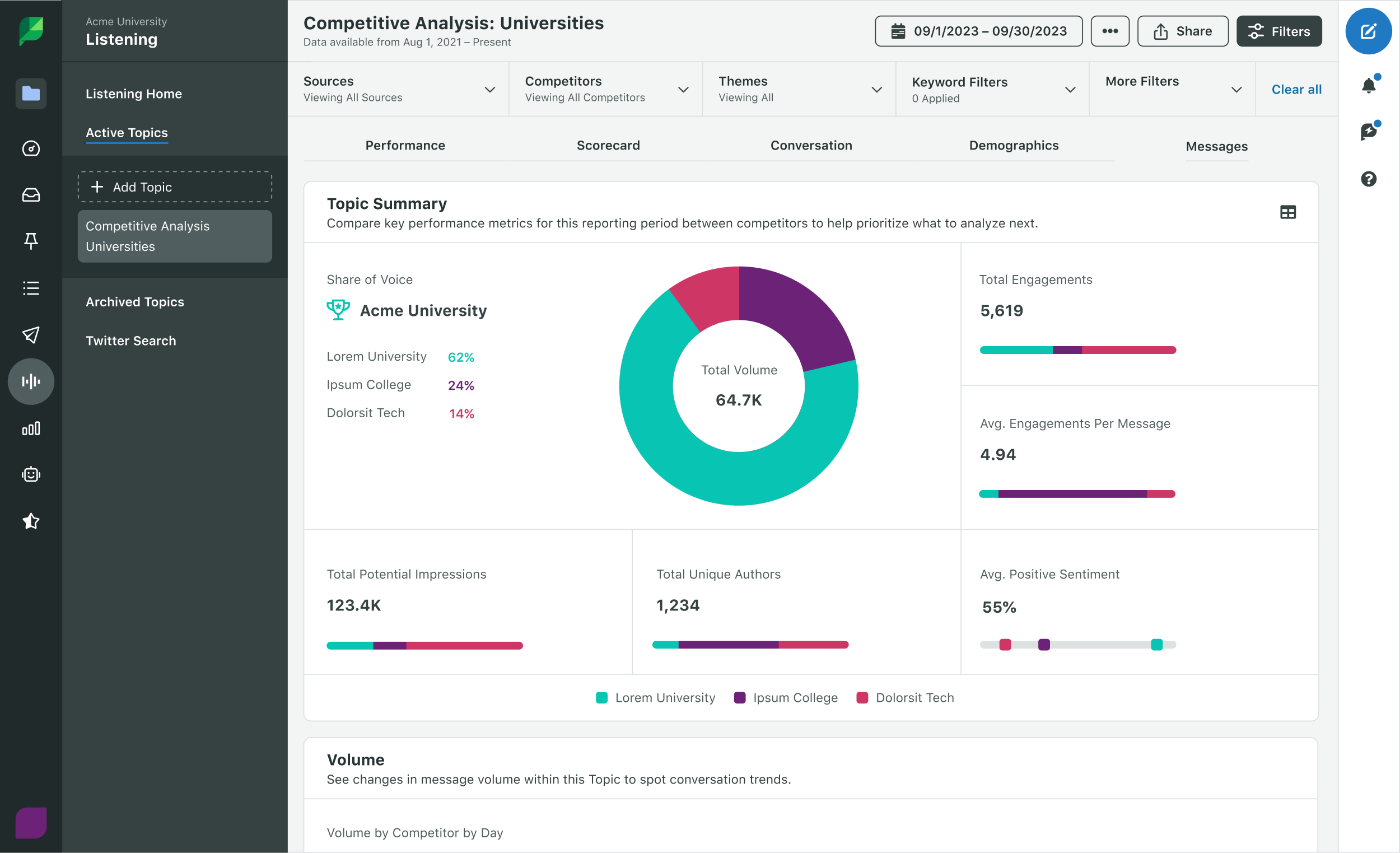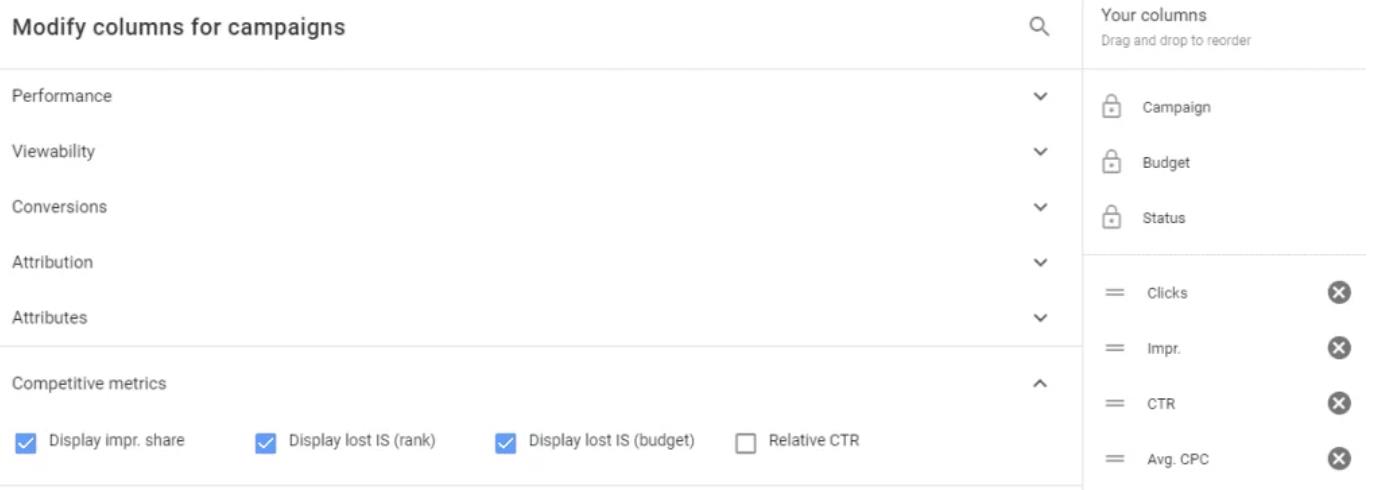With countless channels for brand promotion, marketers face an overwhelming amount of data. To cut through the noise, focus on metrics that provide a clear picture of your brand's position, like share of voice (SOV).
SOV illustrates your place in the market. It puts all of your other social media metrics into context so you can understand where your brand stands.
Is your brand present in relevant product conversations? Do people consider your company a leader in the industry? If not, you might have a problem with your brand’s share of voice.
But here's a crucial point: It’s not about dominating every conversation. True SOV comes from strategically placing yourself in the discussions that resonate with your target audience and contribute meaningfully to an industry narrative. Think quality over quantity.
In this post, we explore this metric in depth and show you ways you can build up your share of voice on social media and other channels—the right way.
Bonus resource: Keep executives informed of the impact of your social strategy and position your brand’s share of voice with the right competitive context using Sprout’s social media scorecard template.
Get the template
What is share of voice?
Share of voice (SOV) is a measure of the market conversation your brand owns compared to your competitors. It measures your brand’s visibility and influence within industry conversations. The more market share you have, the greater popularity and authority you likely have among users and prospective customers. SOV isn't a static metric; it's constantly evolving alongside consumer interests and competitive dynamics.
While SOV sometimes refers to a brand’s share of paid advertising in a competitive marketplace, it also has a broader definition that can include various elements of digital marketing and advertising, including mentions on social media and traffic for certain keywords.
Understanding your SOV provides insight into your brand's position within the current market, illuminating opportunities for growth.
Why you need to measure share of voice
Measuring your brand’s share of voice helps you see the bigger picture and where your brand fits into it. It adds context to your performance data, allowing you to pinpoint opportunities for growth and improvement.
Calculating your share of voice benefits your business in several key ways:
Audience insights
Share of voice can act as a barometer for how effectively your brand messaging is landing with your target audience. A strong share of voice often indicates that your messaging is aligned with your audience's and values. Conversely, a low SOV might suggest a need to re-evaluate your messaging or content strategy.
Share of voice data can reveal why customers choose your brand (or your competitors), and even highlight untapped market segments.
For example, imagine you manage social media for a pet supply store. You're analyzing your share of voice and notice a trend: customers are constantly asking about a particular type of treat that none of your competitors seem to carry. This unmet need represents a potential goldmine—an untapped market just waiting for you to offer that sought-after treat.

Competitor research
Share of voice data is your secret weapon to uncover competitive intelligence. It provides insight into competitor strategies, strengths, weaknesses and everything in between. Regular SOV analysis clarifies your competitive landscape, providing data-driven insights for success.
With SOV data, you can:
Identify industry leaders in relevant market conversations.Track your SOV to measure market share growth.Analyze the sentiment within conversations around your competitors to identify opportunities to gain market share.By analyzing this data, you can identify opportunities to improve and differentiate your brand. For a truly comprehensive view of your competitive landscape, combine SOV data with other forms of analysis, such as SWOT analysis and market research. This holistic approach will enable you to make more informed decisions and develop winning strategies.
Brand management
Share of voice data reveals the volume and sentiment of conversations surrounding your brand, allowing you to monitor and benchmark your brand reputation against competitors.
Additionally, this data serves as an essential safeguard. By gaining visibility into the entire landscape of brand conversations, you can proactively address emerging issues and minimize potential risks that might otherwise go unnoticed.
With Sprout Social’s Listening capabilities, you’re equipped to keep a pulse on brand conversations and boost your share of voice with relevance and positivity. Use it to monitor fluctuations in brand sentiment, helping you decode the factors driving these changes and respond effectively.

How to calculate share of voice
Now that we've explored the benefits of measuring share of voice, let's dive into how to measure it. Use the following formula to calculate share of voice:
Share of voice = Your brand metrics / Total market metrics
This formula applies across all marketing channels, with slight variations in specific metrics. For example, you might track brand mentions across Facebook, Instagram, X (formerly known as Twitter) and more, for social SOV, while the volume of brand mentions across media channels determines media SOV. In this formula, 'brand metrics' refers to the data points you're tracking for your own brand, while 'total market metrics' includes the same data points for all relevant competitors in your industry.
While this formula provides a basic understanding of SOV, it's important to remember that it doesn't capture everything. Qualitative factors, such as the impact and relevance of mentions, also play a crucial role.
Generally, there are four major areas to focus on when calculating share of voice:
Social media share of voice
Let's zoom in on a crucial aspect of share of voice: social media. Your social media share of voice reflects consumer conversations across platforms, making it a valuable metric for understanding audience sentiment and brand perception.
Social listening tools simplify the process of tracking social media SOV by identifying all your brand or product mentions across platforms. Compare your brand's performance to competitors to understand your position.
Sprout’s Listening tools help you visualize and analyze this data, providing a breakdown based on engagements, impressions, unique authors and sentiment. You can also filter results by network, keywords and other criteria.

Media share of voice
Media share of voice reveals which publications mention your brand, the context of those mentions, and your overall popularity among reputable sources.
By comparing your media SOV to your competitors, you can identify key publications for outreach and PR. This data can also inform your content strategy and help you tailor your messaging to resonate with specific media outlets.
While social listening tools like Sprout’s are excellent for tracking social media conversations, you'll need specialized public relations and earned media software to effectively measure media share of voice. At Sprout, our social media team combines social media share of voice and media share of voice for a more accurate measure of our brand performance.
PPC share of voice
Your PPC share of voice measures your ad's visibility compared to its potential reach.
Google Ads calculates this using Impression Share, factoring in your campaign and keyword settings. To find this data in your Google Ads account:
Go to the Campaigns tab.Click the columns icon.Select Modify columns.Click on Competitive metrics.Choose the Impression Share columns you want to track.By analyzing your Impression Share, you can gain valuable insights into your PPC performance and identify opportunities to improve your visibility. For example, a low Impression Share might indicate that your bids are too low or your targeting is too narrow.

SEO share of voice
Beyond paid advertising, understanding your share of voice in organic search is crucial. Measuring SEO share of voice requires specialized tools that analyze your search visibility compared to competitors.
To measure this, you'll need specialized search optimization (SEO) tools that analyze your rankings for relevant keywords. These tools provide insights into how much of the organic search traffic for those keywords is going to your site versus your competitors.

By analyzing this data, you can identify opportunities to improve your SEO strategy, target valuable keywords that you might be missing and ultimately drive more organic traffic to your website.
What you can measure with share of voice
Share of voice measures your brand's presence in broader market conversations. Marketers can use SOV data to track general brand awareness, identify industry trends and benchmark their performance against the competition. A strong overall SOV often indicates a healthy level of brand awareness and engagement.
To gain even deeper insights from SOV data, consider segmenting it by key brand priorities. This allows you to tailor your analysis to specific business goals and uncover nuanced audience insights. For instance, an automotive company measuring its presence among electric car enthusiasts should focus on the specific conversations within that segment to extract meaningful takeaways.
At Sprout, we use custom Listening Topic Themes to understand how our message resonates across key brand priorities. If you're unfamiliar with Themes, here's a quick explanation:














